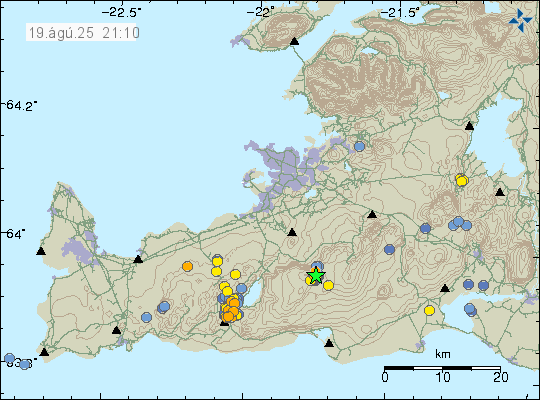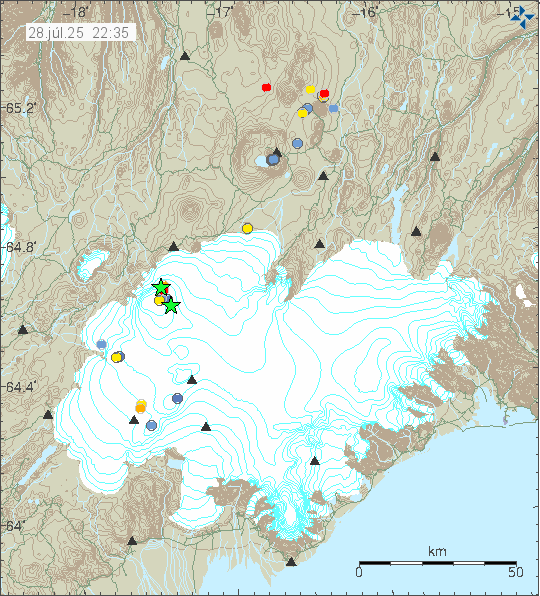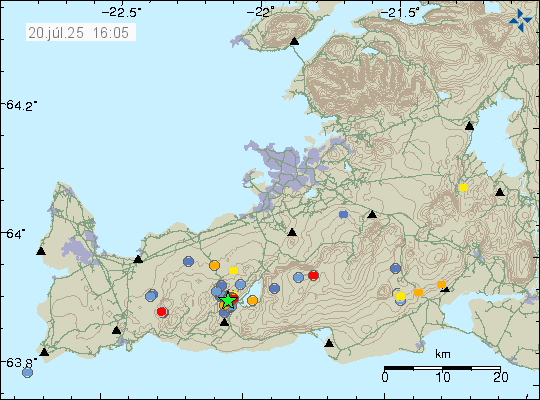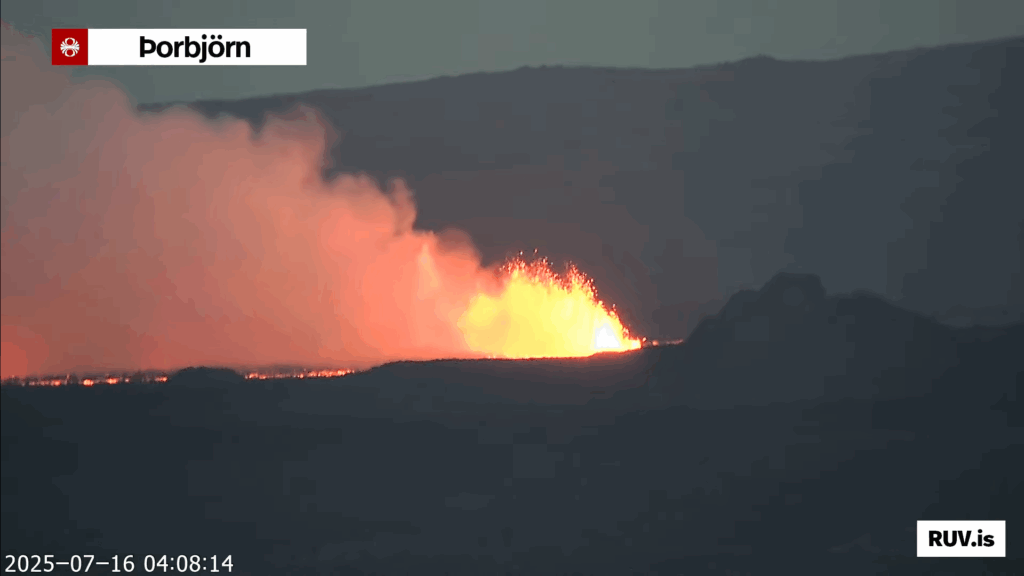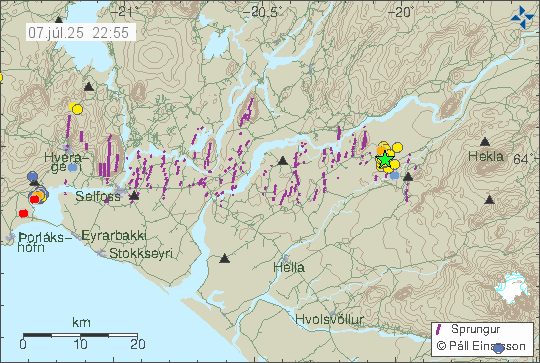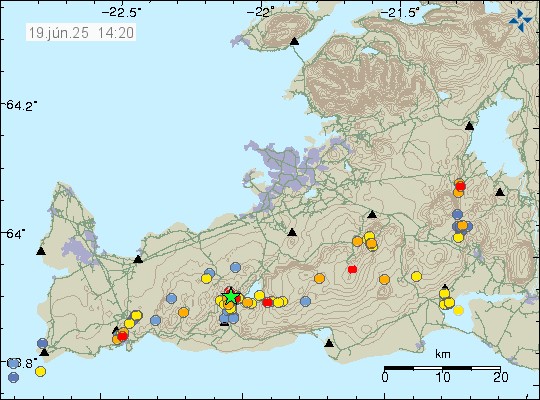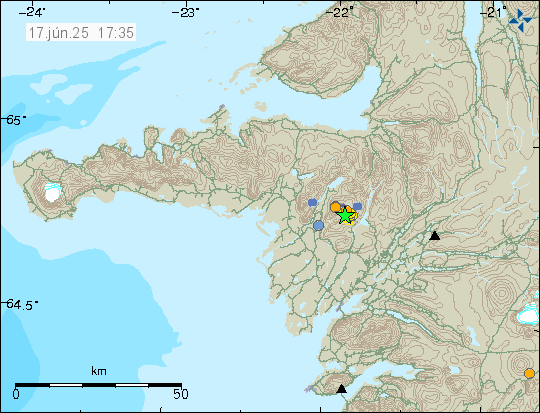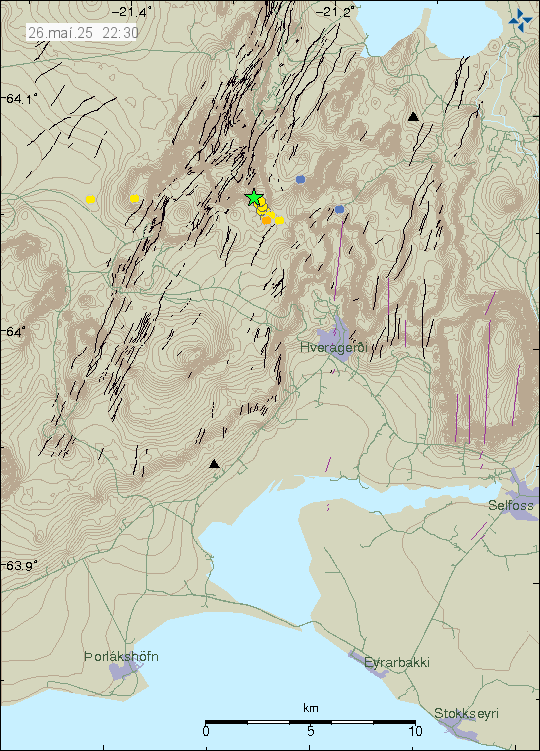This morning on 20-October 2025 an strong earthquake swarm started in Katla volcano. Strongest earthquake so far had a magnitude of Mw4,5. It was most likely felt in nearby populated areas. Several earthquakes with magnitude above Mw3,0 also took place. This earthquake swarm is ongoing, but it happens in waves and at the writing of this article there is a quiet period happening.

At the moment there has not been any signs of magma movement. That might change without warning. There also not been any change in glacier water from Mýrdalsjökull glacier. That only show up after 4 to 8 hours, since it takes time for the glacier water to travel to the glacier rivers from Mýrdalsjökull glacier. If anything more important happens. I’ll post a new update on what is going on.

